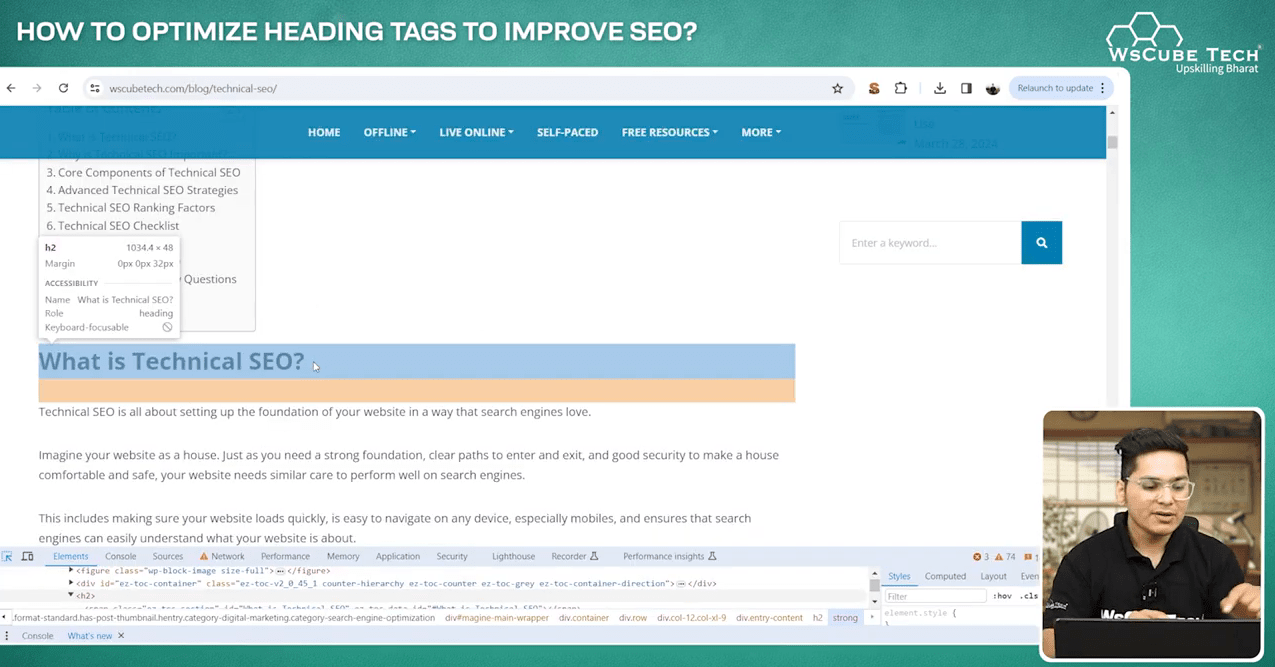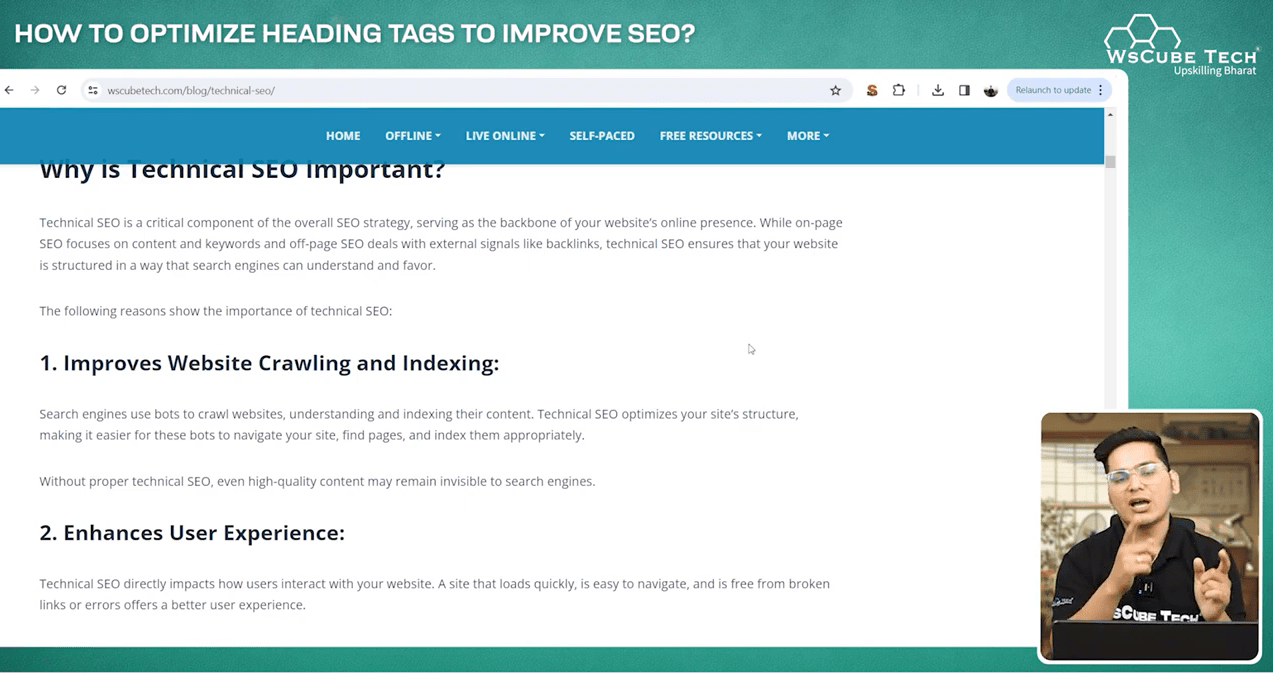SEO-Friendly Header Tags: H1-H6 Optimization Tips
Acquiring knowledge of the organization as well as practical usage of heading tags is an absolute necessity, if an online marketer practices on-page search engine optimization. This particular article compares the usage and importance of the header tags H1, H2, H3, H4, H5, and H6, and also provides measures on how best to use them. Correct usage of these tags not only increases the chances of making the content understandable but also enhancing the chances of search engine performance. Now, let’s take the plunge!
📋 Table of Contents
- 1. Introduction to Heading Tags
- 2. Definition and Purpose of Heading Tags
- 3. Types of Heading Tags
- 4. Hierarchy of Heading Tags
- 5. Implementing Heading Tags in WordPress
- 6. Common Mistakes with Heading Tags
- 7. Keywords in Headings for SEO
- 8. Final Takeaways
1. Introduction to Heading Tags 🌐
The importance of the heading tag structure in Search Optimization, that was within the scope of the session, is on the delivery of quality content. It may seem such a trivial issue, but heading tags, where used correctly, are essential in guiding the SEO for your site. In the following sections, we will delve into the nature of these tags and how they should be used strategically.
2. Definition and Purpose of Heading Tags 📝
Heading tags from H1 to H6 encompass Caption that are used to structure web content and serve as essential HTML tags. Those tags are of great importance in the arrangement of content in a pyramid form so that it is easy to access by the user and search engines as well. Broadly speaking, the main objective of these tag is to express relative weight to different areas of the page. H1 is used for the main header of the article; whereas, H2, H3, and so on act as break-up portions of main/head headings of the articles’ content parts.

3. Types of Heading Tags 📌
Understanding the different types of heading tags is essential for effective content structuring. The hierarchy is as follows:
- H1: This is the primary heading and should be used only once per page.
- H2: These serve as main subheadings that categorize your content under the H1.
- H3: Sub-sections within H2 headings for detailed topics.
- H4-H6: These can be used for lesser subheadings or for specific details within a topic, though they are rarely necessary.
Correctly applying these tags helps users navigate the content better, boosting overall user engagement and SEO performance.

4. Hierarchy of Heading Tags 🔢
The hierarchy of heading tags signifies their importance in the content structure. Each level corresponds to a different layer of content significance:
- H1: Main title, encapsulating the primary theme of the page.
- H2: Important subsections that categorize main ideas under the H1.
- H3: Details and further explanations that support the H2.
Maintaining this hierarchy ensures that your content is logically structured and accessible, promoting improved user experience and aiding search engines in content indexing.
5. Implementing Heading Tags in WordPress 🖥️
When using platforms like WordPress, implementing heading tags is straightforward. In the block editor, you can easily choose your heading type from the toolbar. Here’s how to do it:
- Select the block for the text you want to edit.
- From the toolbar, choose “Paragraph” and select the preferred heading tag.
- Ensure only one H1 is used per post or page to maintain hierarchy.
This level of control allows for quick adjustments and ensures that your headings reflect the structure of your content for both readers and search engines.

6. Common Mistakes with Heading Tags ❌
Many webmasters make mistakes when structuring their tag, which can hinder SEO efforts. Common errors include:
- Using multiple H1 tags on a single page, which confuses search engines.
- Forgetting to use headings at all, which affects content clarity.
- Improperly labeling headings, thus misinforming readers and search engines.
Avoiding these common pitfalls ensures that your content remains organized and SEO-friendly.
7. Keywords in Headings for SEO 🔑
Incorporating main keywords into your heading Caption is vital for SEO. This not only helps search engines understand the context of your page but also serves as a guiding point for readers. Here are some tips:
- Include primary keywords in the H1 tag to establish focus.
- Add relevant keywords in H2 and H3 tags to optimize subtopics.
- Ensure that keywords are naturally integrated and do not disrupt the fluency of the text.
This strategy enhances your chances of ranking higher on search engines while still providing valuable content to the reader.
8. Final Takeaways ✅
To effectively utilize heading Caption and optimize your content for both SEO and usability, follow these best practices:
-
- Use H1 for the main title and only once per page.
- Organize your content logically with H2 and H3 tags.
- Include keywords in headings without compromising readability.
- Avoid common mistakes such as mislabeling and overusing H1 tags.
By mastering heading tag hierarchy and implementation, you can significantly enhance the quality and visibility of your web content.
